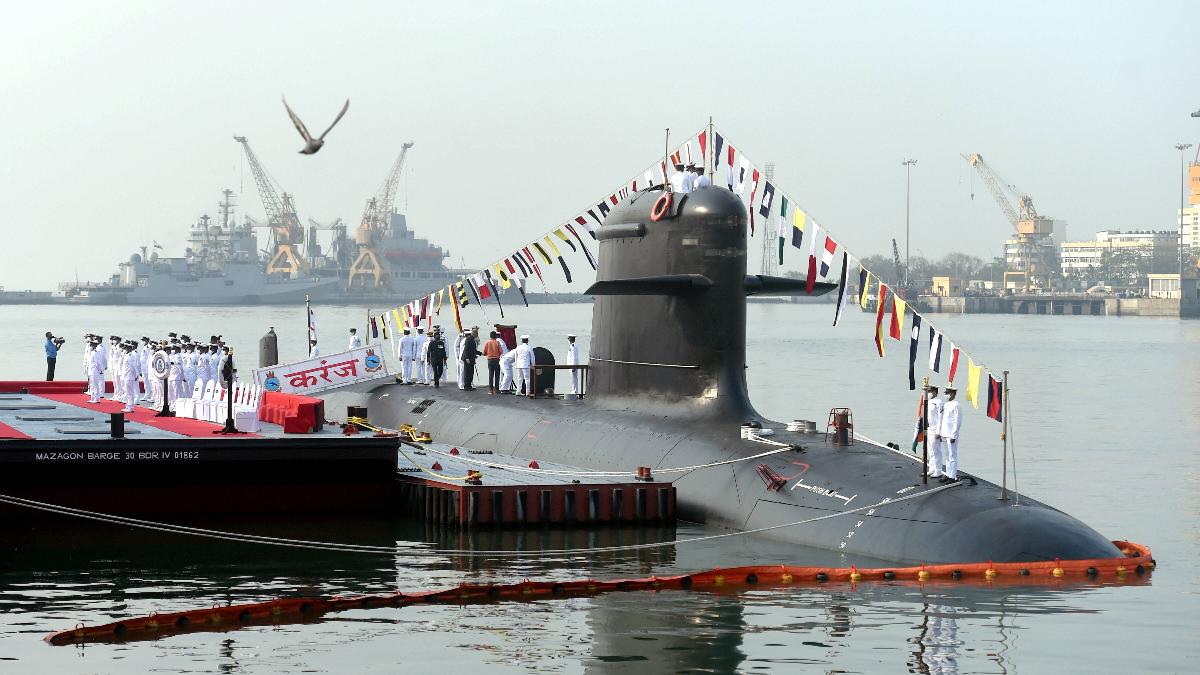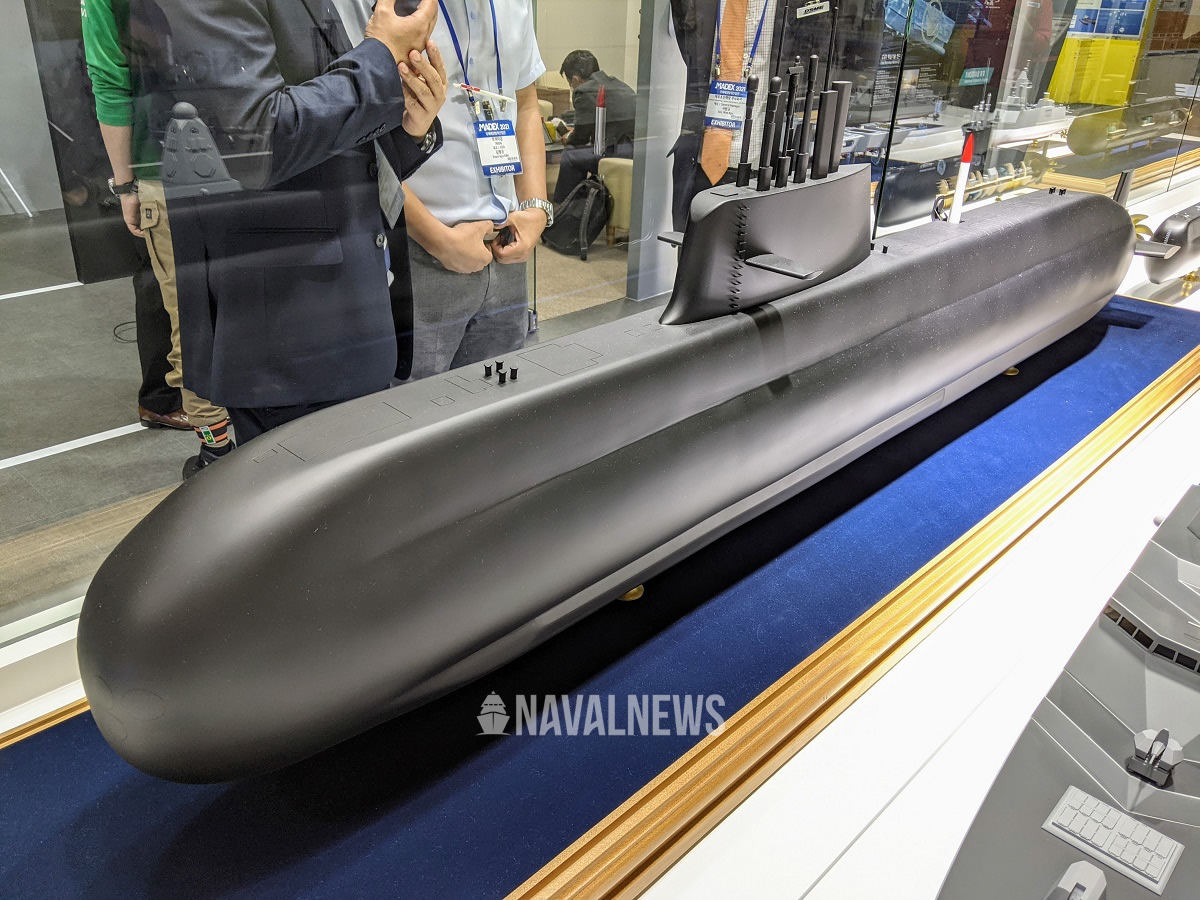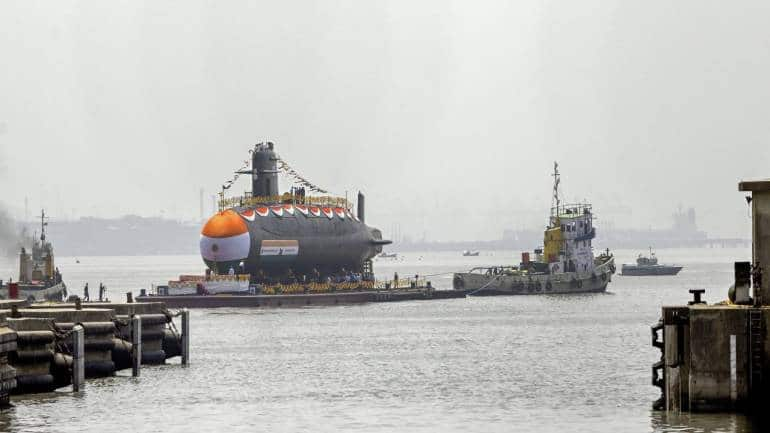I don't think so that it would be a good decisionThe MoD could perhaps consider a consortium of both firms to produce the submarines to drastically cut down on delivery schedules.
It would add additional cost
Latest Thread
I don't think so that it would be a good decisionThe MoD could perhaps consider a consortium of both firms to produce the submarines to drastically cut down on delivery schedules.
Total garbageIndia is the world’s only major submarine-operating country that has not designed and built its own submarines.
I think , they should allow the transfer of emplyees from MDL to L&T . That would smoothen the knowledge transfer and implementation will be efficientI don't think so that it would be a good decision
It would add additional cost
I think the gist is we paid for Technology transfer for subs and never able to use it . Southe Korea did the same and now offering their sub to IndiaTotal garbage
What's Arihant class then
1)India has wasted millions in paying ToT (transfer of technology) fees to foreign OEMs but has not acquired the capability to design and build submarines.
India is the world’s only major submarine-operating country that has not designed and built its own submarines. This is a glaring lapse for a country which inducted submarines over 50 years ago. Yet it was not for want of money. Over four decades, millions of dollars have been spent in obtaining submarine-building expertise from Germany, France and Russia. Yet for various reasons, the Submarine Design Group (SDG), the Indian Navy’s inhouse design organisation, has failed to absorb the capability to design and develop an Indian submarine. In 1981, India signed a contract with West Germany’s HDW to buy four Type 1500 conventional submarines but, more crucially, to acquire submarine-building knowhow. Project officials say the transfer of ToT from West Germany was comprehensive and the plan was to build the fifth and sixth submarines using completely indigenous submarine technology. The company was blacklisted in 1987 on suspicion of bribery, after four submarines had been delivered. In the late 1990s, it paid Russia for design knowhow to build the Arihant-class nuclear submarines. With the blacklist on HDW still on, India signed a contract with the Franco-Spanish consortium Armaris in October 2005 to buy six Scorpene conventional submarines. This contract included transfer of design knowhow. Three submarines are currently in service and three more are due to be delivered by 2023.
2. A need to audit Project 75
The defence ministry needs to carefully audit Project 75, the ‘buy and make’ order for six Scorpene submarines signed in October 2005. This is also critical not just because France’s Naval Group, which supplied the Scorpenes, is also in the reckoning for Project 75‘I’ but also for one other important reason. Project officials say nearly 30 per cent of the Rs 19,000 crore contract cost went towards ToT. This meant that by the sixth Scorpene submarine, India should have been self-sufficient in designing and building submarines, the way it is now for warships. The P-75’I’ would have then segued into a line of Indian designed submarines. This has clearly not happened. What did MDL do with the Transfer of Design Documents (TDD) it received from Armaris, the Franco-Spanish consortium (including DCNS--now Naval Group) that sold the Scorpenes. This TDD went from France to MDL and from the MDL to the DG SDG. It was never utilised. In the 1980s, HDW transferred to MDL all the design blueprints on thousands of microfilms, and microfilm readers were supplied to interpret those designs. These were not utilised because the firm was blacklisted.
3.Why was no indigeneous ecosystem created?
The original 2005 contract was between MDL and Armaris. If the MDL-Armaris contract was an ideal one and all the terms of the contract abided with, then MDL should have established an indigenous supply chain to source components from Indian suppliers. This did not happen. The cost of the contract escalated substantially when MDL-Procured Materials or MPM were added on to the contract. MPM was material that was procured for MDL by the French firm. Project officials say this is what subverted India’s ability to indigenously source the items and manufacture. More than 60 per cent of the Scorpene, including the combat management system and sensors, are imported. Would the same be repeated with the P-75‘I’ contract?
4.Can Project 75 segue into the P75 ‘I’?
India currently operates three different types of conventional submarines from Russia, France and Germany. All three have separate training and spares and procurement. Each submarine has its own distinct build, maintenance and operational philosophy. Russian and French boats, for instance, are completely different in their power supplies, types of motors, control systems, operations and standard operating procedures. A bulk of India’s conventional submarine fleet is over 25 years old and life extensions will see most of them in service for 15 more years. The P-75‘I’, therefore, offers a chance to stabilise the entire submarine line on an in-service platform, whether French, Russian or German. By 2023, the navy will operate six Scorpene submarines which will be in service until 2050 and beyond. Feedback from the current fleet of Scorpene submarines should inform the decision on the choice of the P-75‘I’. Would a lengthened ‘Super Scorpene’ with additional sections for AIP (
5) Can both industrial partners form a consortium to speed up submarine production?
MDL and L&T, the only two Indian shipyards with submarine-building experience, are national strategic assets. MDL has delivered two HDW Type 1500 submarines to the navy and three Scorpene submarines. L&T has fabricated hulls of four 6,000-tonne Arihant class nuclear-powered ballistic missile submarines at its facility in Hazira and integrated them at the Shipbuilding Centre in Visakhapatnam. The P-75 ‘I’ contract will be placed on one shortlisted firm. The MoD could perhaps consider a consortium of both firms to produce the submarines to drastically cut down on delivery schedules. A linear build programme will see the six submarines delivered by 2036 at the earliest. Parallel production by MDL-L&T could halve this delivery schedule.
@Zapper @Nilgiri @FalconSlayersDFI @Jackdaws @Isa Khan
Lessons from Project 75
The Defence Ministry clears six P-75I submarines for the Indian Navy. What lessons it must learn from the P-75 Scorpene submarine projectwww.indiatoday.in
You literally hit the nail , thats my point when we payed the hard earned tax payers money to buy TOT and still not able to consume that , its blasphamous to waste such huge amounts when your country so many people living below poverty line.Bro, our establishment was terrible and now they are just a bit better (or the same) than that worst time.
Hence there is huge missed opportunity with many initial ToT.
HDW blacklisted (209/sishumar) and Bofors blacklisted come to mind for example for the 80s/90s...instead of making rules more pragmatic for greater objective in mind (esp given rotten state internally of our own corruption in first place).
The former (HDW 209) needed more active participation to get to more sustained fruition in ecosystem way....so this is what led to scorpene (and new ToT initiation + predictable cost escalation + delays + consequences from all that) compared to evolution of cards in hand. That is why korean reference (209 to what they dev'ed now) is good one to do.
Bofors was even simpler, there was no further participation needed from Bofors, the ToT was essentially complete. Yet Indian def establishment just sat on that ToT for decades doing nothing with it...all the while our armed forces artillery supply suffered. Horrible.
They did walchand industries and godrej played important role in nuclear reactors and ISRO but the TOT clause was used to spike the price and private industries were intentionally avoided during such deals .They should have allowed private firms to get into defence eons ago. Look at the likes of Lockheed Martin. Tata, L&T, M&M - would have ensured Indian defence companies would be quite competitive. Better late than never I guess.


Awesome news if they give it to L&T , I can bet in next 15 years they will design in house submarines. 3 subs will give them enough experience to absorb the TOT@crixus et al.

Govt can evaluate splitting P75I submarine contract between two bidders: Mazagon Shipbuilders
L&T likely to be the second partner, if the govt decides to share the project. It takes eight years from the awarding of the contract to the handing over of the first submarine. Splitting the project between two firms can cut down delivery time. Given the geopolitical situation, the govt may not...www.moneycontrol.com
L&T likely to be the second partner, if the govt decides to share the project. It takes eight years from the awarding of the contract to the handing over of the first submarine. Splitting the project between two firms can cut down delivery time. Given the geopolitical situation, the govt may not like the project to be delayed.
India’s order for six conventional submarines, costing Rs 43,000 crore, could go to two companies instead of one, given the current geopolitical situation, a top official of one of India’s submarine makers has claimed.
The Request for Proposal (RFP) for the construction of the Project P 75 (I) submarines under the strategic partnership model is expected to be issued in July. The Defence Acquisition Council has given the go-ahead for the same in June.
The order will go either to Mazagon Dock Shipbuilders (MDL) or Larsen & Toubro (L&T) -- the two domestic companies which have to partner with one of the five international original equipment manufacturers (OEM).
If the government looks at the possibility of having parallel production of more than just one submarine at a time this would dramatically reduce the time required to produce the vessels.
Narayan Prasad, Chairman and Managing Director, said: “In the current geopolitical scenario, if the government concludes that the threat perception in the Indian Ocean Region and the South China Sea is so pronounced that they need parallel production of these vessels in a shorter horizon, such concepts can also be conceived. I can’t rule it out.”
The acquisition, which is one of the biggest under the ‘Make in India’ strategic partnership model, is aimed at boosting India’s submarine fleet, most of which are over 25 years old.
Tech cross-transfer possible
“At any point of time, when the government decides that (MDL and L&T) can join (forces), there could be a cross transfer of technology to quickly build the submarines. We can examine those possibilities, and that is a huge potential. We will not be able to rule it out completely,” Prasad added.
It would take about eight years from the awarding of contract to the handing over the first submarine to the Indian Navy. The delivery of the remaining submarines will be done at an interval of 12-15 months. If the order is split between MDL and L&T, it would substantially cut down the delivery period.
The five global OEMs are Russia’s Rosoboronexport, Germany’s ThyssenKrupp, France’s Naval Group, Spain’s Navantia and South Korea’s Daewoo Shipbuilding & Marine Engineering. These companies were shortlisted by an empowered committee last year.
“After the RFP floated, they will give about four months’ time for bid submission. This is a very complex programme, in which there is a field evaluation trial of a new technology called air independent propulsion system. All the five technology partners are located in five different countries, so this will take a certain amount of time,” Prasad added.
These conventional diesel-electric submarines are bigger than the six Scorpene-class submarines manufactured by MDL in Mumbai. Three such Scorpene submarines (P75) have been handed over to the Indian Navy while the fourth, INS Vela, is set to join the forces before the end of FY22.
 delhidefencereview.com
delhidefencereview.com
